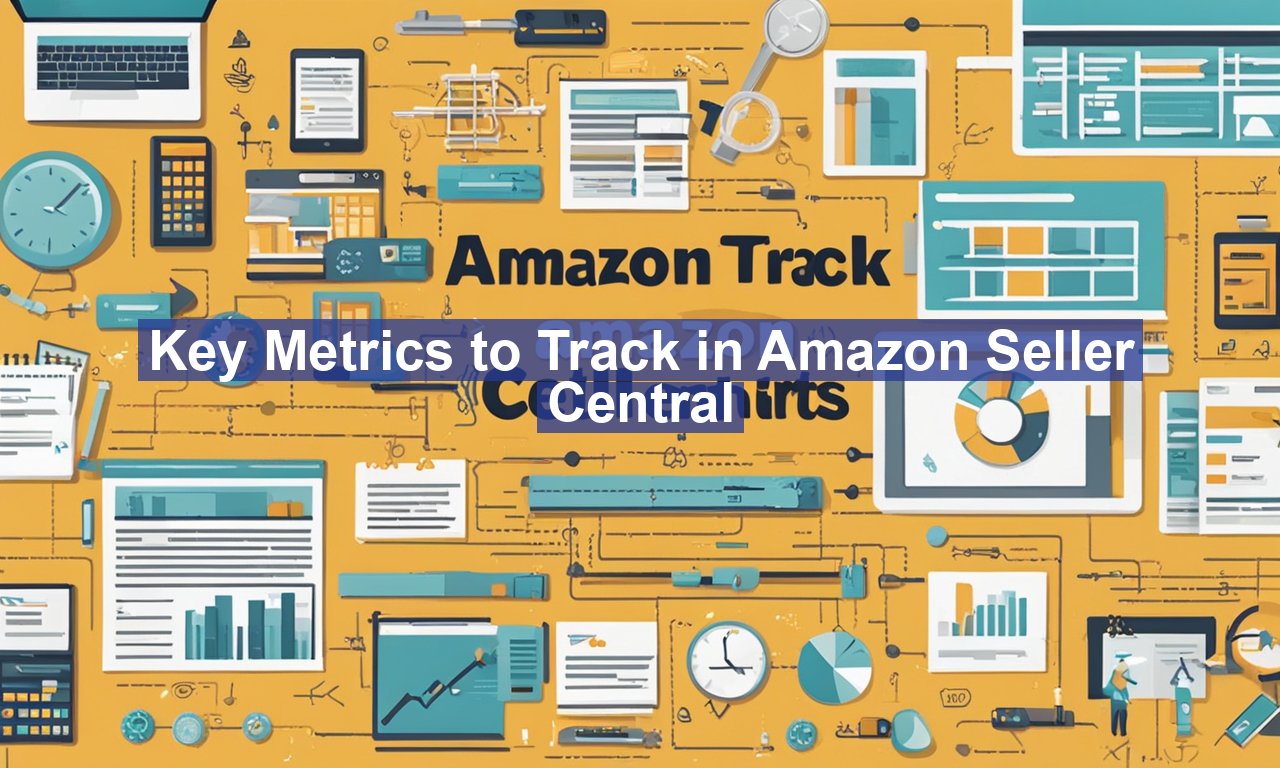In the rapidly evolving world of e-commerce, keeping a firm grasp on the success of your Amazon business can feel like navigating a maze. That’s where Amazon Seller Central comes in handy! With its vast array of tools and data, it can sometimes seem overwhelming, but knowing which key metrics to track can simplify your journey and steer you toward growth. Here’s a guide to the crucial metrics every Amazon seller should monitor to excel in this competitive marketplace.
1. Sales Metrics
Sales metrics are foundational to understanding the performance of your Amazon store. They offer insights into the health of your business and highlight areas needing attention.
Gross Sales and Net Sales
Tracking gross sales, the total revenue generated before expenses, alongside net sales, which accounts for returns and other deductions, provides a clear picture of your top-line and bottom-line revenue. Regularly analyzing these metrics can help you gauge profitability and inform strategic decisions.
Order Volume
Understanding how many orders you’re fulfilling gives context to your sales trends. A spike in orders may indicate a successful marketing campaign or high demand, while a drop might signal issues with product listings or the emergence of strong competitors. For tips on boosting your order volume, you can explore winning e-commerce strategies.
2. Inventory Metrics
Inventory management is crucial to maintain a positive relationship with customers and avoid issues such as stockouts or overstocking.
Inventory Performance Index (IPI)
The IPI score measures how efficiently you manage your inventory on Amazon. Factors like low inventory rates, excess inventory, and stranded inventory influence this score. Maintaining a high IPI score ensures optimal fulfillment and reduces storage fees. Learn more from Amazon’s own guidelines, which detail the IPI scoring system.
Sell-Through Rate
The sell-through rate, calculated by dividing the number of units sold by the average number of units held on a daily basis, helps gauge inventory turnover. A high sell-through rate suggests efficient inventory management, minimizing costs associated with holding onto excess products.
3. Advertising Metrics
In a platform as competitive as Amazon, advertising can be a powerful tool to enhance product visibility and drive sales.
Advertising Cost of Sales (ACoS)
ACoS measures the efficiency of your advertising campaigns, calculated by dividing your total ad spend by attributed sales. A lower ACoS typically indicates a more efficient campaign. To optimize your campaigns, consider factors like keyword performance, ad placements, and targeting strategies.
Click-Through Rate (CTR) and Conversion Rate
CTR calculates the percentage of people who clicked on your ad, while the conversion rate measures how many of those clicks resulted in purchases. Monitoring these metrics helps refine your ad strategy and enhance return on investment – a key factor discussed in this comprehensive guide.
4. Customer Metrics
Customer satisfaction is the lifeline of any successful online business, making it essential to monitor customer-centric metrics closely.
Product Reviews and Ratings
Positive reviews and high ratings significantly influence purchasing decisions on Amazon. They boost trust and can enhance the visibility of your products. Regularly monitoring reviews provides insightful feedback and can help identify product improvement opportunities.
Order Defect Rate (ODR)
ODR is a critical metric for maintaining Amazon’s sale privileges, calculated based on negative feedback, A-to-Z Guarantee claims, and chargebacks. Amazon mandates a maximum 1% ODR. Keeping this metric low will enhance your store’s reputation and prevent penalties or suspensions.
5. Operational Metrics
These metrics shed light on the efficiency and effectiveness of your day-to-day operations on Amazon.
Fulfillment Performance
Fulfillment performance measures your ability to deliver products on time and in good condition. Key components include the late shipment rate and the pre-fulfillment cancel rate. Excelling in these areas ensures customer satisfaction and can prevent account suspension.
Return Rate
A high return rate could indicate underlying issues with your products or product descriptions. Monitoring this metric helps identify these issues, enabling you to address them promptly and improve your overall reputation.
In conclusion, navigating Amazon Seller Central may seem intricate, but focusing on the right metrics can ensure you’re driving your business in the right direction. From tracking sales and inventory to optimizing advertising spend and understanding customer satisfaction, these metrics will provide clarity and direction, enabling you to make informed, strategic decisions. So, gear up and utilize these insights to keep your Amazon business thriving! For further exploration, you might want to read more about growing your store with Amazon FBA and other innovative strategies.


